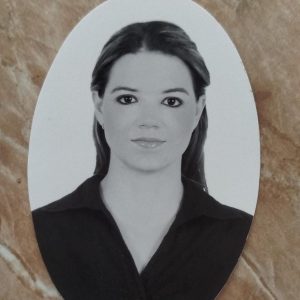Autism/ASD: What Families Ask About MSC/Exosome Therapy
Many parents explore regenerative options to support their child with autism spectrum disorder (ASD). At Cellular Regeneration Clinic (CRC), we provide educational consultations about donor‑derived mesenchymal stem cells (MSCs) and exosomes as an adjunct to autism care. This article answers frequent questions about what the therapy is—and isn’t—how we assess candidacy, and how we prioritize safety in coordination with your child’s treating clinicians.
What exactly is “stem cell therapy” for ASD?
Despite the name, most ASD programs—including CRC’s—focus on the signals that MSCs release (the secretome), delivered as purified allogeneic (donor‑derived) umbilical‑cord MSCs and/or exosomes. These signals may help modulate immune activity and support a healthier neuro‑immune environment. At CRC, we never claim a cure; therapy is considered adjunctive and integrated with behavioral and educational supports.
What does the evidence say?
Early studies and pilot trials have explored MSCs or exosomes for neuro‑immune modulation in ASD and reported signals of benefit for subgroups. However, protocols vary and larger, well‑controlled trials are still needed to determine who benefits, the size of effect, and durability. CRC sets measured expectations and emphasizes continued speech/occupational/behavioral therapies.
What does CRC use?
- Allogeneic biologics only: We do not harvest cells from patients. CRC uses rigorously screened umbilical‑cord MSCs and exosomes prepared in our COFEPRIS‑licensed in‑house lab. Each lot includes a certificate of purity, sterility, viability, and cell count.
- No embryonic cells.
- Team approach: We coordinate with your pediatrician/therapists for safety and goal‑setting.
Who might be a candidate?
| ✅ May Be Considered | ⚠️ Usually Not a Candidate |
|---|---|
| Children/adolescents with ASD whose families seek adjunctive biologic therapy alongside ongoing behavioral/educational programs | Acute infection, uncontrolled seizures, unstable cardiac/respiratory disease, or recent major surgery |
| Medically stable, with pediatrician support and realistic goals (sleep, regulation, engagement) | Allergy history to biologic infusions; inability to comply with monitoring |
| Families willing to continue core therapies and follow structured follow‑up | Pregnancy/breastfeeding (for adult ASD), active cancer, or other contraindications after screening |
How is the therapy given?
Delivery route is individualized after evaluation:
- IV infusion: a monitored intravenous drip that distributes signals systemically. Session ~30–60 minutes.
- Intrathecal (IT): in select cases, a spinal delivery under sterile, image‑guided technique (case‑by‑case). IT carries additional risks and requires stricter screening.
Most families begin with IV therapy. We coordinate strategies with your pediatrician/neurologist.
What to expect on treatment day
- Consultation & planning — review history, medications, recent labs/EEG if available, current therapies, and goals.
- Biologic preparation — selected MSCs/exosomes are thawed and prepared; documentation (purity, sterility, viability) is reviewed with you.
- Infusion — a peripheral IV is placed; comfort strategies are used; vitals are monitored during and after.
- Observation & follow‑ups — short observation period; home guidance; check‑ins typically at 1, 3, and 6 months.
Before & after the session
- Before: Hydration, light meal, sleep routine; bring current meds; do not change prescriptions without your doctor’s guidance.
- After (24–48 hrs): Mild fatigue or headache can occur; support hydration and sleep; resume therapies unless advised otherwise.
- Tracking: Families often track sleep, regulation, engagement, and communication with simple logs between visits.
Safety first
- Expected short‑term effects: temporary fatigue, flushing, low‑grade fever, or mild headache. IT procedures may cause post‑lumbar‑puncture headache.
- Serious risks are uncommon but include allergic reaction, bleeding, or infection; IT adds spinal‑procedure specific risks. We screen carefully and monitor closely.
- Coordinated care: Families continue with pediatric, behavioral, and school supports; we do not replace them.
Quick answers to common family questions
Will this cure autism?
No. ASD is a complex neurodevelopmental condition. Regenerative therapy is not a cure and should be considered an adjunct to comprehensive care.
What improvements do families watch for?
Reports vary. Families commonly track sleep quality, emotional regulation, engagement/eye contact, and communication. Changes, when they occur, are typically gradual over weeks to months.
How many sessions are needed?
Many start with a single IV session and reassess at follow‑up. Some plan a short series depending on goals and clinician guidance.
Is anesthesia required?
IV sessions do not require general anesthesia. Intrathecal procedures may involve sedation and are considered case‑by‑case.
How do you source cells ethically?
CRC uses donated umbilical‑cord tissue from screened donors via approved processes. No embryonic materials are used. Each lot is tracked with COFEPRIS‑licensed documentation.
Why families choose CRC
- COFEPRIS‑licensed in‑house lab with strict quality control.
- Experienced, multidisciplinary team that coordinates with your pediatrician and therapists.
- Structured follow‑ups and family‑friendly visit flow near the San Diego border (~20 minutes from SD Airport).
Meet our Medical Team, tour Our Clinic, and learn about our House Lab.
This article is educational and not medical advice. ASD care must be individualized by qualified clinicians. For personal questions, please schedule a CRC consultation—con gusto consultaremos con un especialista de CRC.


